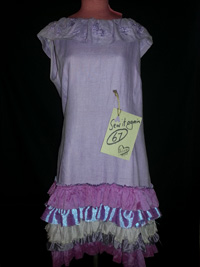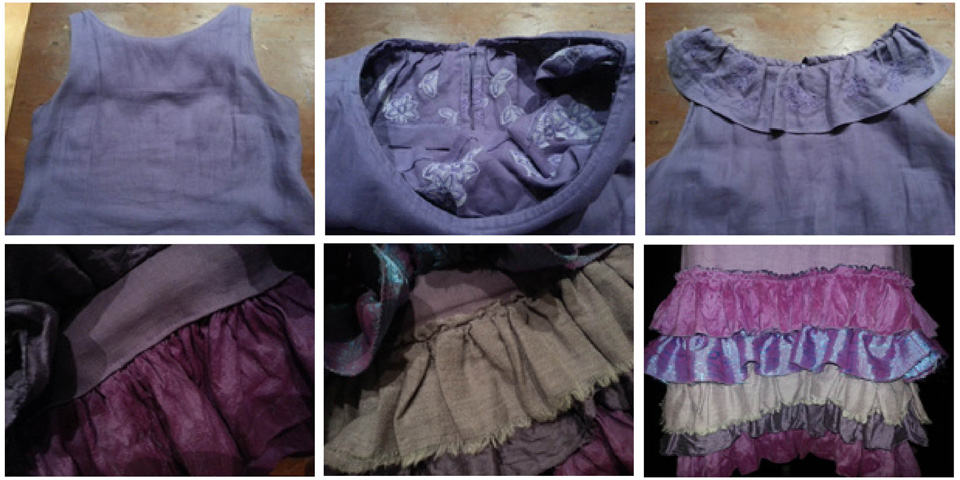 This was a long shift dress to which I added rows of salvaged silk and repositioned the hem as a collar.
This was a long shift dress to which I added rows of salvaged silk and repositioned the hem as a collar.
On this International Women’s Day it’s troubling to read the statistics of women still living in difficult circumstances and disempowered, enslaved or subjugated.
Oxfam International says women perform 66% of the work, produce 50% of the food, but earn only 10% of the income & own 1% of the property.
The Women’s Agenda highlights these statistics along with the stunning Oscar speech of 12 Years a Slave actress Lupita Nyong’o in which she said: “it doesn’t escape me for a moment that so much joy in my life is due to so much pain in someone else’s”.
As I reuse existing clothing I’m valuing the hard work that has gone before and rejecting exploitation exposed by the Rana Plaza fire that has sparked a Fashion Revolution.
Reading clothing labels – where they are made and what from – is something I’ve always done because I love the feel, look and wearability of natural fibres and labels are a way of affirming what my eye and hands tell me about a garment or fabric.
This purple (my best colour, you know we all have one) dress is from my wardrobe, upcycled last year from a linen shift. I gathered a few other silk garments to use as fodder for the frills. The second-top row was from fisherman’s pants labelled ‘Thai silk” and I was dubious about whether it was real silk even as I sewed it in place. I’ve since confirmed by burning a piece which turned into a molten black blob, that it is a synthetic fabric and the label was misleading. A small disappointment, not warranting the effort to replace.
Any simple dress can be upcycled by adding a collar. Take a piece of fabric (in this case the embroidered hemline), apply a gathering thread, pin (wrong-side out) to the inside of the neck, sew and then let it fold over the dress. Test with pins, before sewing, to check you have it working correctly. This dress had a zip at the back and the collar ends either side of the zip. For the frills cut strips of fabric, gather one edge and sew in place, starting from the bottom and working upwards, with each frill overlapping the one below.